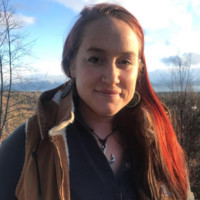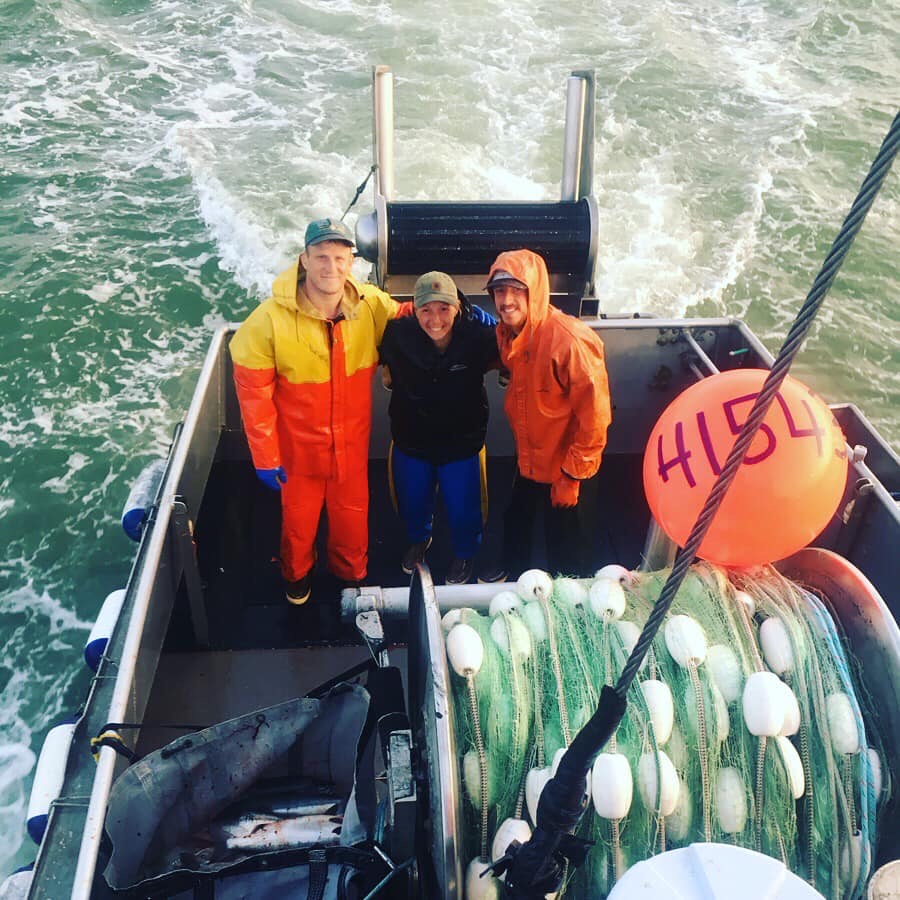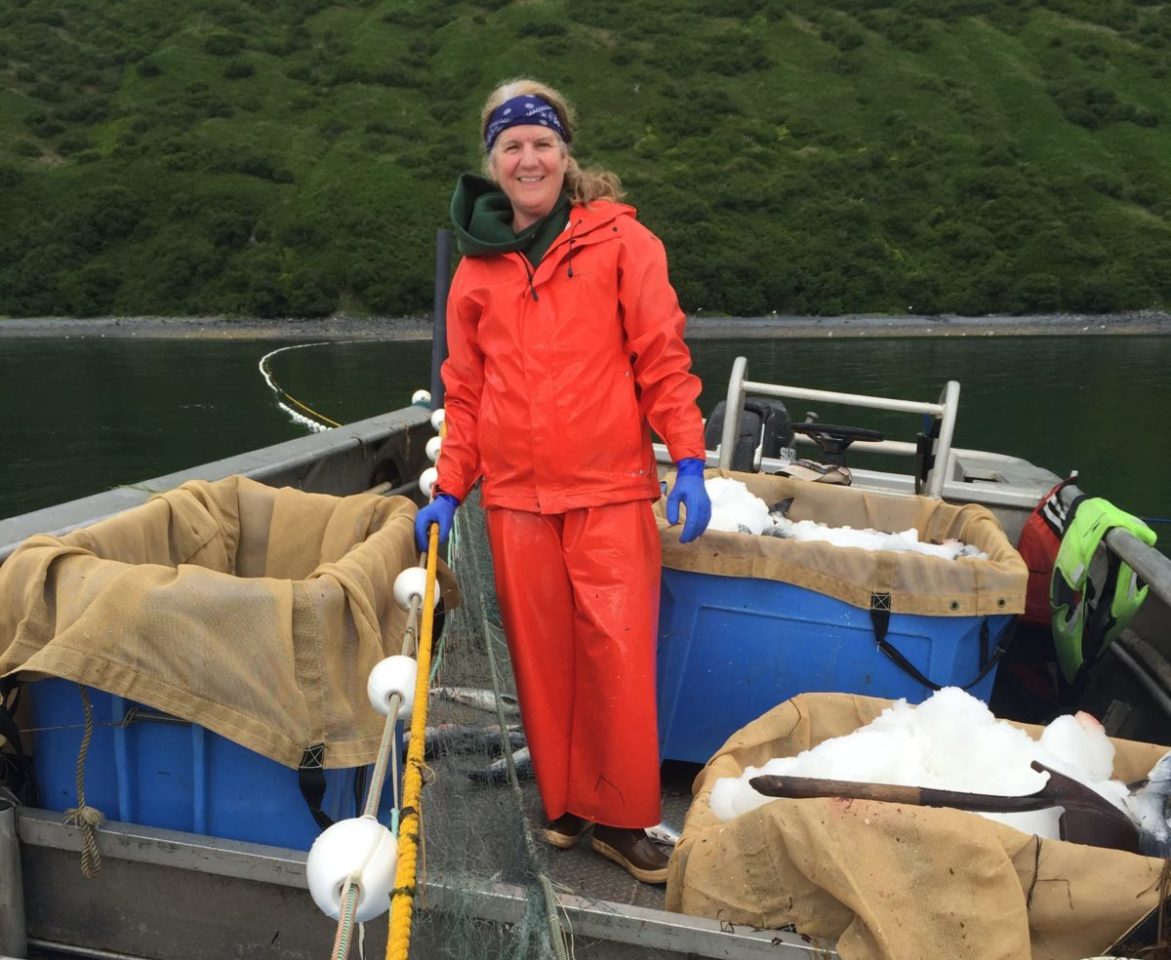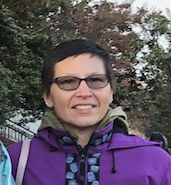Fish Tales from Alaska
Published by Ocean Conservancy
Alaskans love sharing a good fish story—we are famous for it—and often with each retelling the size of the fish and direness of the circumstances increase. Fish tales are fun to share. The impacts of climate change on our region are not and the stories of what we are seeing in Alaska need no embellishment.
A group of Alaska women involved in commercial and subsistence fisheries traveled to Washington D.C. this month to share the magnitude of change we are seeing firsthand. As fishermen living in remote areas, interacting with the natural world harvesting fish, we see things that others don’t. Our relationship with our respective regions run deep, often spanning decades and generations. The change we are seeing is happening now, and we feel a responsibility to bring awareness to the degree of change we are experiencing in the Northern United States.
Alaska fishermen are innovative, resourceful and willing to act to maintain resilient fishing communities. Storytelling and first-hand experiences help to bring awareness to our policy makers, influencing actions to address climate change. We will keep talking, we must. Our future is at risk. Fishing communities nationwide need policies that help fishing livelihoods weather rapid change, and work together to mitigate carbon emissions contributing to climate change. We all need to act, and perhaps those of us coming from the North, where the conditions are shifting the fastest, can help others understand what’s coming.




“In Alaska, we have left behind the days of discussing climate change in hypothetical terms. As coastal communities, as small business owners and people intimately connected with the landscape, we are witnessing what can only be described as systemic and unprecedented change—in terms of its speed and scale. Dry stream beds and die offs, erosion and mass fish migrations. These are the stories we brought to Washington, D.C., along with requests for practical steps to help our coastal communities and fisheries stay resilient in the face of sweeping change.
It is more important than ever that our federal leaders support fishery and oceanographic research, community infrastructure that bolsters resiliency efforts, and policy processes that integrate considerations for climate change impacts. We need management processes nimble enough to adapt and thrive with those impacts, and rigorous enough in its standards to conserve at-risk stocks, habitats and food webs. It is an honor to be a storyteller for our northern ecosystems, helping to connect what we’re seeing on the grounds to these long-term policy needs for our regions and nation.”
Second-generation fisherman from Homer and Senior Consultant with Oceans Strategies


“Our family business is unique in that we set net using pickup trucks to work our gear from shore. Historically, sea ice protected our gravel and bluff from the Bering Sea winter storms. That’s no longer the case. We’re seeing decades of our former rate of erosion disappear in mere years. And while the current temperatures are positively impacting our salmon runs, we’re headed for a tipping point when our fish can no longer adapt to changing conditions. I am grateful for the opportunity to bring these stories back to DC where we can help inform policy-makers as they tackle these complex issues, and look forward to working with them to make our fishing communities adaptable and climate ready.”
Fifth-generation set-netter from Bristol Bay and Working Waterfronts program manager and policy analyst with the Alaska Marine Conservation Council


“Just in this year, we had multiple, unusual wildfires in my region. Our creeks were the most dry that many residents had seen. Incidentally, these last few years have also had the largest recorded sockeye runs. I’m told that the heat has actually motivated these runs. But what of the other creatures that we are seeing suffer in our regions? I haven’t seen the caribou migration for over 15 years; and while commercial fishing this summer, we caught dozens of dead shearwaters in our nets. Some of the change could be natural, and some could be unnatural, but I believe it’s safe to say that civilization has been at fault in the past, so why not again this time? We must continue to adapt for the wellbeing of our fisheries and local biology.”
Second-generation Bristol Bay drift-netter and subsistence fisherman


“This summer on Kodiak Island felt apocalyptic. As I flew the length of the island in August, streambeds normally bubbling with salmon were bone dry, reminding me of a desert wash. After 40 days of no rain and unprecedented heat, the northern rainforest was shriveling up and our salmon dependent livelihoods felt extremely vulnerable. Processors were running out of water, down to days of water needed to continue to process fish. Smolt released from salmon hatcheries died, unable to live in the warm waters. Remote fish sites were out of water, hauling drinking and washing water in by hand. The fish were stressed and unable to enter the streams they were bound for due to lack of water and high-water temperatures which influences salmon movement. The salmon were exhibiting behavior no one had seen before; sunburned pink salmon repeatedly jumping out of the water in the mouth of the rivers and along beaches, red salmon were traveling deep, seemingly seeking cooler temperatures as they traveled under nets while sunburnt fishermen on deck watched. Those who live in the last frontier are now living on the front lines in a changing climate, changes that are happening now. Harvesters and managers must be ready to change course under these conditions and we all need to work together to influence policies which reduce carbon emissions and support measures that help coastal residents’ weather abrupt changes to our livelihoods and traditions. The monitoring, fish surveys, stock assessments and research conducted by the National Marine Fisheries Service and the National Oceanic and Atmospheric Administration provide the best science possible to guide sustainable management practices and it is critical to Alaska’s fishing future to continue these efforts. We need to continue to come to policy makers in D.C. from Alaska homes and paint a picture with our words. We did just that last week and it was clear our stories resonated in each of the offices we met with. Keep talking Alaskans, our voices matter.”
Commercial fisherman from Kodiak, Alaska and Fisheries Policy Director with the Alaska Marine Conservation Council


“The Alutiiq people have inhabited the Kodiak region for at least 7,000 years. Recent years have brought a series of events that, once considered unprecedented, have become the new normal. These events include draught, flooding, forest fires, multiple record heat waves, seabird and marine mammal die offs, irregular fish returns, warm climate, invasive species and extreme fish mortality. The Alaska Federation of Natives declared climate change a state of emergency in Alaska at the 2019 Convention and reinstated its Climate Action Leadership Task Force to advocate for strong climate policies. I came to Washington D.C. to help others with less interaction with the natural world we call home in Alaska to share my experience and offer myself as a resource.”
Kodiak Island Native Alaskan, subsistence and commercial fisherman, Registered Professional Engineer, and the Director of Lands & Natural Resources for the Afognak Native Corporation
Every fisherman has their own account of how our warming environment is impacting their fishery, business and community. Thank you to the offices that met with these fishermen to hear theirs.
Like our content?
Sign up for our emails!
The post Fish Tales from Alaska appeared first on Ocean Conservancy.
Read the full article at: https://oceanconservancy.org/blog/2019/11/22/fish-tales-alaska/


